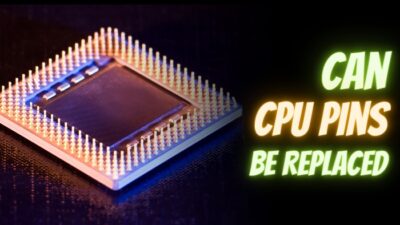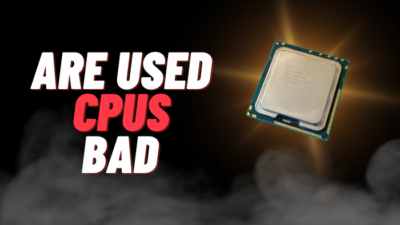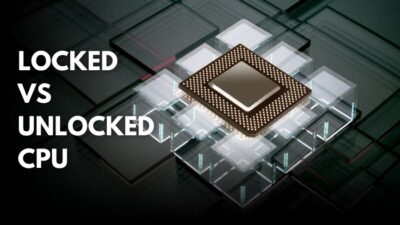There is a proverb-high risk, high gain. For overclocking a CPU, it’s the same. You put the processor on the line, & gain an extra boost in performance.
But is the stake always fruitful? How much further the chip can go without breaking?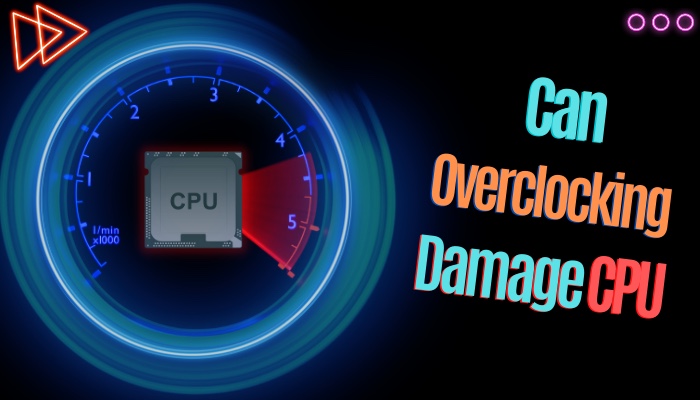
In this article, I will explain the side effects of overclocking CPU & how to handle it. Let’s dive in.
What is Overclocking & Should You OC the CPU?
Modern CPUs are so fast. It communicates with other PC components (graphics card, memory) by sharing data to process, which requires less than a second. On a CPU spec sheet, you will notice that the processor has a clock frequency like-3.2GHz.
That frequency value is responsible for completing calculations in a second. By overclocking―you increase the clock speed, completing the CPU cycle to process data faster.
That being said, large amounts of transistors are required to increase a single core speed, but these massive transistors also push the chip to draw more power, resulting in more heat. That’s where the concern begins when overclocking.
This brings up a question, should you overclock a CPU?
Well, as technology is upgrading day by day, with suited motherboards, all AMD Ryzen & Intel K series chips are capable of OC. Though these processors are already overclocked to high frequency, it’s still achievable to surpass that.
But with the potential danger involved, is the extra hassle worth it? Can overclocking the CPU increase FPS? The answer totally relies on the games & other usage cases of the PC.
Here is an avg. framerates table of 4GHz vs. overclocked to 5GHz processor’s impact on some games. For the benchmark, i7-8700K, RTX 2080 & DDR4-3000 RAM were used.
| Game name | CPU speed- 4GHz | CPU speed- 5GHz |
|---|---|---|
| Red Dead Redemption 2 | 111 | 113 |
| CS:GO | 670 | 690 |
| The Witcher 3 | 140 | 150 |
| Battlefield V | 165 | 175 |
| Assassin’s Creed Odyssey | 120 | 128 |
| GTA V | 100 | 114 |
| Forza Horizon 4 | 160 | 175 |
The gamers who play graphically demanding games that look great at max settings, need high-spec parts. Because the games try to utilize the full potential of all the components. But it’s not practical to grab all high-end parts for everyone.
For this reason, a cheap & fast solution is overclocking the CPU & GPU. Aside from gaming, CPU-intensive works―encoding, rendering, 3D modeling, etc. will also benefit from CPU overclocking. As already said, to OC the chip entirely depends on you.
But to avail of the gain, you have to identify if your CPU is overclocked or not.
What Risks Come With Overclocking a CPU?
For advanced technologies, modern CPUs tune down their frequency when the sensor detects critical heat & eventually shut down if crossed the limit. But that doesn’t mean there is no risk.
All parts have a lifespan, the same for the processor. Extreme overclocking, like using 1.4V+ Vcore can push the CPU to consume a lot of power. Even though that high voltage doesn’t kill the chip instantly, it takes a toll by reducing the lifespan of a great value.
That being said, with the extreme OC process, can overclocking break a CPU?
As already mentioned, the processor can shut down at critical temp. But YES, there is a possibility of getting the CPU damaged in the overclocking process for overvolting & overheating. Despite the extra voltage, the higher temp can damage a CPU if there is not an adequate cooler.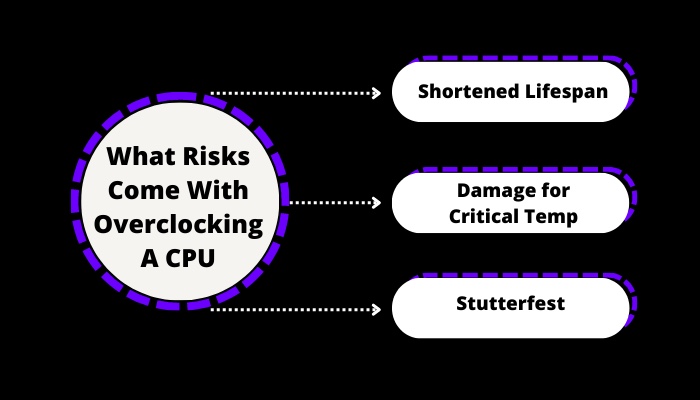
Here are the vulnerabilities that come with CPU Overclocking:
1. Shortened Lifespan
The main side effect of overclocking CPU is, it reduces the life expectancy. The transistors have a typical lifetime. But with the overclocking, extra heat accelerates the process.
This extra heat also fastens the dried-up procedure of thermal paste, which results in poor heat dissipation through the cooling system. Though desktop users have the advantage of setting a beefy cooler & changing the thermal paste, laptop users find it difficult if they try to OC it, which they shouldn’t either.
The degradation rate is not specific & depends on the aggressiveness of overclocking. By aggressive means, how much further you are willing to push the chip to attain your desired frequency?
Will you run the chip at high voltage for another 100MHz? Or do you use a lower voltage to stay under the safe temp zone while still having an extended frequency?
Based on this, light overclocking can prolong life a bit more than hardcore overclocking. Continuous usage of extreme OC can reduce CPU lifespan considerably.
2. Damage for Critical Temp
Due to the overclocking, transistors work way faster & produce more heat. Without a sufficient cooling system, the temp rises inside the casing. With continued usage, this increases the probability of damaging the CPU alongside the graphics card, hard disk, memory, etc.
Due to overheating, it raises a question-can a CPU get fried for OCing? Well, it depends on many factors such as overvolting, faulty CPU, bad PSU, etc.
3. Stutterfest
The CPU needs a proper voltage for a certain frequency. If the clock speed & voltage are mismatched, it will be unstable. As a result, you might face stuttering due to overclocking, framerate drops, system crashes, etc.
This is why it’s crucial to test the stability of overclocking. For that reason, finding a sweet value for the voltage is necessary. Extra voltage can overheat & consume more power, whereas very low voltage will not boot the system or create issues.
Besides these issues, as overclocking is running the frequency beyond the manufacturer’s advertised speed, it can also void the warranty.
After knowing the risk, don’t you want to avoid it? Well, read along to know more about it.
How Can You Prevent Damage from Overclocking?
It is recommended to OC the chip through BIOS. So, before overclocking, you should take some precautions to avoid it. This ensures everything is running smoothly.
Here are some steps to prevent damage during OC:
- Install the latest BIOS version: Manufacturers release newer BIOS versions to fix several issues. It can also include stability fixes. That’s why, ensure you have the latest available BIOS installed to avoid any issues.
- Update Chipset drivers: Similarly to BIOS, chipset drivers also tend to fix various issues. Before overclocking, you should update the drivers. Even though the containing fixes are not relevant to your problem.
- Monitor Sensors: During overclocking, it’s crucial to monitor voltage amount & temperature. Always keep the values in the safe range. When necessary, increase the voltage with little steps & stress test the overclock on Windows.I always use HWiNFO64, which is a great tool to monitor voltage, usage, and temps on Windows. For stability tests I usually use Prime95, OCCT, Cinebench R23, etc.
- Arrange a well-ventilated cooling system: Make sure there is enough intake airflow & exhaust airflow to maintain a good ventilation system. An adequate CPU cooling system is also vital to cool down the chip quickly. With some best budget CPU coolers for OC, you can start your overclocking adventure.
FAQs
Can You Break a CPU by Overclocking?
With insufficient coolers & high voltages, there is a high risk of breaking your processor. The misconfiguration settings for your OC will lead to instability & crash. If the CPU fails to shut down at critical temps, it can even get fried.
Which Is Better for Overclocking: Air or Liquid Cooling?
A liquid-cooling system is more efficient for overclocking. But air coolers are also capable of handling OC. That being said, liquid cooling requires some maintenance, which is time-consuming & risky. However, air cooler maintenance is relatively easy & doesn’t take much of your time.
What is CPU thermal throttling?
When the chip reaches its critical safe temp for an insufficient cooling system, it starts to reduce the core frequency to cool down itself. This is called thermal throttling.
Final Thought
With overclocking, you are trying to surpass the chip’s limit. So without proper measures, there should be troubles that can ruin your rig.
With proper tuning of the voltages & keeping the temp under a safe range, you can avoid damaging the CPU.
In this article, I explained how you can deal with overclocking & avoid damage. If you have any further queries, leave a comment.

